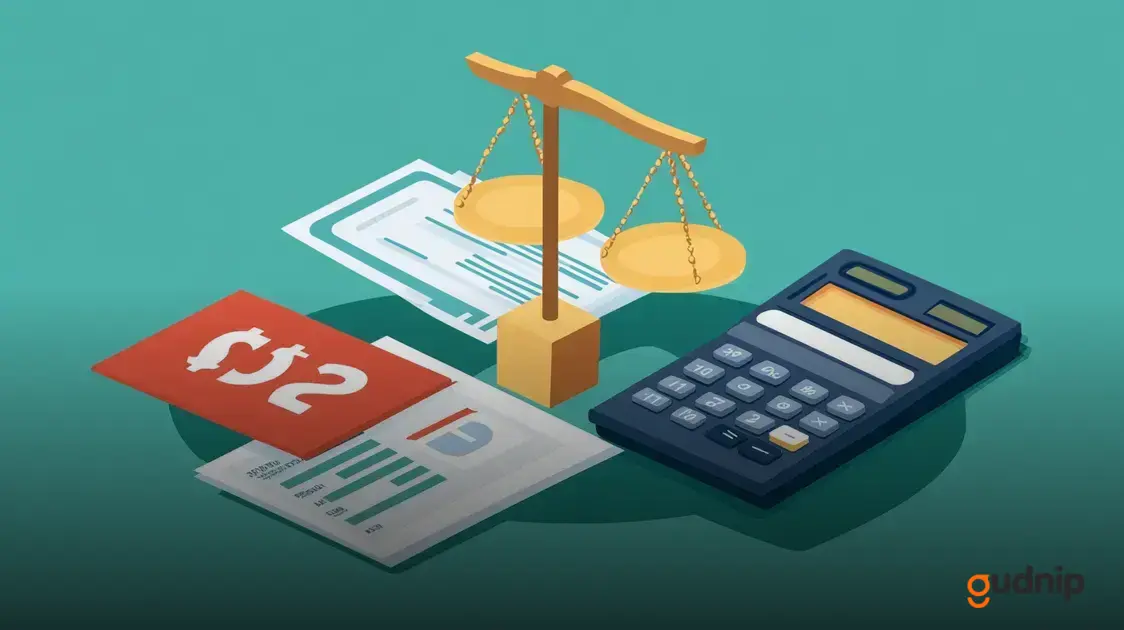Student loan debt can feel overwhelming, but taking control is possible.
Understanding your options and strategies can ease the burden.
Understanding Student Loans
Understanding student loans is the first step toward managing your financial future. Student loans are funds that students borrow to pay for their education.
These loans must be paid back, usually after graduation. Knowing the basics can help you avoid common pitfalls.
What Are Student Loans?
Student loans are financial obligations taken out by students to cover the cost of tuition, books, and living expenses while in school.
Unlike grants and scholarships, student loans need to be repaid, often with interest.
How Do They Work?
You typically apply for student loans through the federal government or private lenders.
After you fill out your application, the lender will assess your financial need.
If approved, the lender will send the loan funds to your school to pay for tuition or give you the money to manage your expenses directly.
Differentiating Between Federal and Private Loans
Federal student loans are funded by the government, offering lower interest rates and more flexible repayment terms.
Private loans come from banks or credit unions and usually have higher interest rates and stricter repayment options.
The Importance of Learning About Your Loans
Understanding the terms, interest rates, and repayment plans associated with each loan is vital.
This knowledge will enable you to make informed decisions as you navigate your educational financing.
Eligibility Requirements
Eligibility for student loans often depends on factors like your income, credit history, and enrollment status.
Knowing what these factors are can help you better prepare for the application process.
Consequences of Defaulting
If you fail to repay your student loans, it can lead to serious consequences, like damage to your credit score and wage garnishment.
Understanding these risks can motivate you to stay on track with your repayments.
In conclusion, gaining a solid grasp of student loans and their requirements is essential in navigating your financial education journey effectively.
Types of Student Loans
Types of student loans vary significantly, catering to the diverse needs of students. Understanding these types can help you make better financial decisions.
1. Federal Student Loans
These loans are provided by the U.S. government. They typically offer fixed interest rates and flexible repayment options. Federal loans include:
- Direct Subsidized Loans: For undergraduate students with financial need. The government pays the interest while you are in school.
- Direct Unsubsidized Loans: Available to undergraduate and graduate students. Interest accrues while you’re in school.
- Direct PLUS Loans: For graduate students and parents of dependent undergraduate students. Requires a credit check.
2. Private Student Loans
These are offered by banks and private lenders.
They usually have higher interest rates compared to federal loans. It’s important to check the terms and conditions as they can vary significantly.
Private loans may require a credit check and a co-signer.
3. Federal Perkins Loans
This program is discontinued; however, it was for students with exceptional financial need.
Schools administered these loans, and they had a low-interest rate.
4. State-Sponsored Loans
Some states offer their own student loan programs. These can have unique benefits or terms, so researching your state’s options is key.
5. Institutional Loans
Some colleges and universities offer loans directly to students. These loans may come with specific terms and repayment plans tailored to the institution.
Understanding Your Options
Each type of loan has its pros and cons.
Consider factors like interest rates, repayment terms, and whether you qualify for loan forgiveness when deciding what type of loan to pursue.
Interest Rates Explained

Interest rates are a crucial part of student loans.
They determine how much you will pay back over time. Understanding interest rates can help you manage your loans wisely.
What is an Interest Rate?
An interest rate is the cost of borrowing money. It is usually expressed as a percentage. For student loans, this rate can either be fixed or variable.
Fixed vs. Variable Interest Rates
Fixed interest rates stay the same throughout the life of the loan. This means your monthly payments won’t change.
On the other hand, variable interest rates can fluctuate based on market conditions. This may lead to unpredictable payments over time.
How Interest Rates Are Determined
Why Interest Rates Matter
The interest rate affects the total amount you will pay back. A lower rate means less money out of your pocket over time.
Understanding how rates work can help you make better borrowing decisions.
The Importance of Shopping Around
When considering loans, always compare interest rates from different lenders.
This can save you money in the long run. Be sure to look at both federal and private loan options.
Impact on Repayment
Repayment Options
Repayment options are vital to managing your student loans successfully. They dictate how you will pay back what you owe.
Understanding these options can make a significant difference in your financial journey.
Standard Repayment Plan
The standard repayment plan is the default option for federal student loans. It requires fixed monthly payments over 10 years.
This plan allows borrowers to pay off their loans quickly, saving on interest.
Graduated Repayment Plan
With a graduated repayment plan, payments start low and gradually increase every two years.
This option can be good if you expect your income to rise in the future.
Extended Repayment Plan
This plan extends repayment over 25 years, which can lower your monthly payments.
It is ideal for borrowers with larger loan amounts, but it also means you may pay more interest over time.
Income-Driven Repayment Plans
Income-driven plans adjust your monthly payment based on your income. These include:
- Income-Based Repayment (IBR): Payments are 10-15% of your discretionary income.
- Pay As You Earn (PAYE): This plan caps payments at 10% of your income.
- Revised Pay As You Earn (REPAYE): Similar to PAYE but may include spousal income.
Loan Forgiveness Options
Deferment and Forbearance
If you’re facing financial difficulties, deferment or forbearance might be options.
These allow you to temporarily stop making payments or reduce your payment amounts.
However, interest may still accrue during this time.
Loan Forgiveness Programs
Loan forgiveness programs provide opportunities for borrowers to have some or all of their student loans canceled.
Understanding these programs can relieve financial stress.
Public Service Loan Forgiveness (PSLF)
The PSLF program forgives the remaining balance on your Direct Loans after you complete 120 qualifying monthly payments.
To be eligible, you must work full-time for a government or nonprofit organization during this period.
This is a fantastic option for those dedicated to public service.
Teacher Loan Forgiveness
If you are a qualified teacher, you may be eligible for up to $17,500 in loan forgiveness after teaching for five consecutive years in a low-income school or educational service agency.
This program encourages excellence in education.
Income-Driven Repayment Forgiveness
Borrowers on income-driven repayment plans can have their remaining loan balance forgiven after 20 or 25 years of qualifying payments.
This option is ideal for those whose income stays low compared to their debt.
Perkins Loan Cancellation
While this program is no longer accepting new applicants, it allowed for cancellations of Perkins Loans for certain professions, such as teachers and nurses.
Be sure to check if you qualified before the program’s end.
State-Specific Forgiveness Programs
Some states offer their own loan forgiveness programs for residents.
These initiatives often target specific professions, such as healthcare or teaching in underserved areas.
Research your state’s offerings to explore more options.
Eligibility Requirements
To qualify for any forgiveness program, you must meet specific requirements, such as working in a qualifying profession and having eligible loans.
Additionally, making on-time payments is usually a key condition for approval.
Gather all the necessary paperwork and information to apply.
Tips for Managing Student Loans

Managing student loans wisely can help you stay on top of your finances and ensure a bright financial future.
Here are some important tips you can follow.
1. Create a Budget
Start by making a budget that includes all your income and expenses.
Knowing where your money goes can help you allocate funds for your student loan payments.
2. Set Up Automatic Payments
Consider setting up automatic payments for your loans.
This can help you avoid late fees and ensure your payments are made on time.
3. Keep Track of Your Loans
List all your student loans, including their amounts, interest rates, and repayment terms.
Knowing your loans can help you prioritize and manage payments effectively.
4. Communicate With Your Lender
If you run into financial difficulties, reach out to your lender.
They may offer options like deferment, forbearance, or modified payment plans.
5. Consider Refinancing
If you have good credit and a stable income, refinancing your loans may be a smart option.
This can lower your interest rate and reduce your monthly payments.
6. Take Advantage of Discounts
Some lenders offer discounts for setting up automatic payments or for being a loyal customer.
Check with your lender to see what options are available.
7. Stay Informed About Forgiveness Programs
Research loan forgiveness programs that you may qualify for, especially if you work in public service or qualifying professions.
These programs can significantly ease your financial burden.
8. Be Prepared for Payments to Begin
Know when your grace period ends and keep track of when payments start.
This will help you avoid missing payments and incurring penalties.
Impact of Student Loans on Credit Score
The impact of student loans on your credit score is significant.
Managing your loans wisely can positively influence your credit rating, while mismanagement can have negative effects.
1. Student Loans as Credit Accounts
When you take out a student loan, it becomes part of your credit history and impacts your credit score.
Your payment history, loan balance, and types of credit all play a role.
2. Payment History Matters
Your payment history is the most important factor in your credit score. Making timely payments on your student loans can help improve your score.
On the other hand, missing payments can seriously hurt your score.
3. Credit Utilization Ratio
Your credit utilization ratio measures how much debt you have compared to your available credit.
Student loans typically have a fixed balance, so they do not affect utilization like credit cards do. However, a higher total debt can still lower your score.
4. The Length of Credit History
Having a student loan as part of your credit mix can help lengthen your credit history, which can benefit your credit score over time.
This is especially true if you maintain good payment habits.
5. Defaulting on Student Loans
If you fail to make payments and default on your student loans, your credit score can drop considerably.
This can lead to difficulties in obtaining other forms of credit, such as credit cards or mortgages.
6. Checking Your Credit Report
Regularly check your credit report for accuracy.
If you see any errors related to your student loans, dispute them immediately to avoid negative impacts on your credit score.
Budgeting for Student Loan Payments
Budgeting for student loan payments is essential for managing your finances effectively.
Here are some steps to help you create a budget that accommodates your loan payments.
1. Know Your Loan Amounts
Start by listing all your student loans, including their total amounts, monthly payments, and interest rates.
This information will help you understand how much you owe and what your monthly obligations are.
2. Calculate Your Income
Determine your total monthly income, including your job salary, side gigs, or any financial support you receive.
Knowing your income will help you see how much you can allocate for loan payments.
3. Track Your Expenses
List all your expenses, such as rent, utilities, groceries, and entertainment.
Tracking your expenses helps you find areas where you can cut back to free up money for loan payments.
4. Prioritize Your Payments
After calculating your necessary expenses and income, prioritize your student loan payments.
Adjust your budget to ensure these payments are made on time every month.
5. Use a Budgeting Tool
Consider using budgeting apps or spreadsheets to manage your finances.
Tools like Mint or YNAB (You Need a Budget) can help you keep track of your income, expenses, and loan payments.
6. Build an Emergency Fund
Having an emergency fund can prevent financial stress.
Aim to save at least three to six months’ worth of expenses in case something unexpected occurs, like job loss or medical bills.
7. Review and Adjust Regularly
Your budget should be flexible. Review it monthly and adjust as necessary for any changes in income or expenses.
This will help you stay on track with your student loan payments.
In Conclusion: Taking Control of Your Student Loans
Managing student loans effectively is crucial for achieving financial freedom.
By understanding the types of loans available, the impact of interest rates, and the various repayment options, you can make informed decisions that will affect your financial future.
Utilizing budgeting strategies and seeking loan forgiveness programs can further alleviate the burden of student debt.
Remember, your credit score is influenced by how you handle your loans, so it’s essential to make timely payments and stay informed about your options.
Ultimately, the key to navigating student loans successfully lies in being proactive, informed, and organized.
Empower yourself with knowledge and take the steps necessary to gain control of your financial situation.





